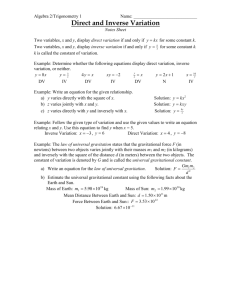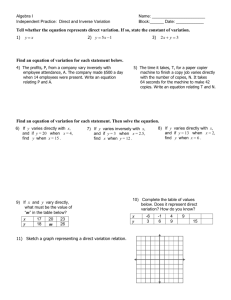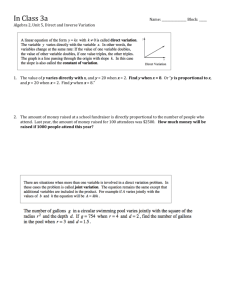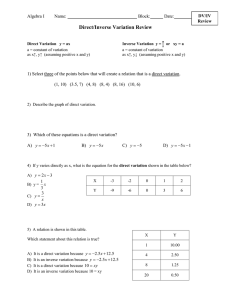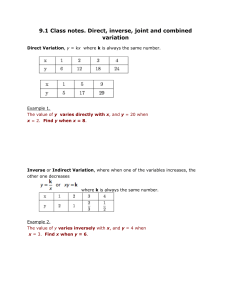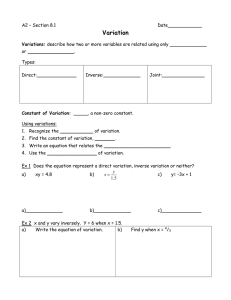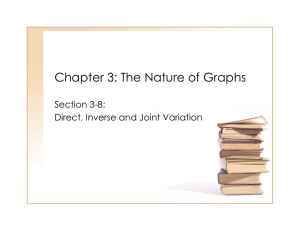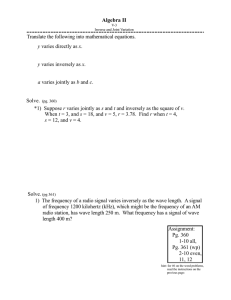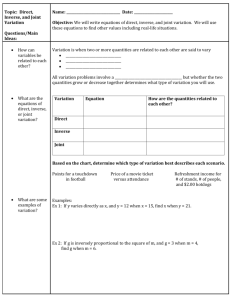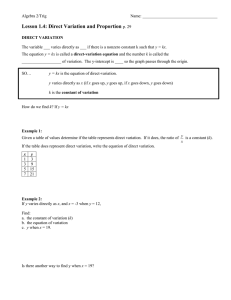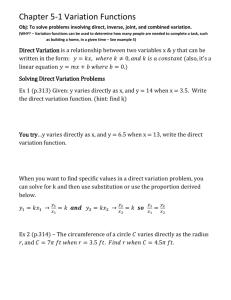Algebra 2: Inverse, Joint, Combined Variation Worksheet
advertisement
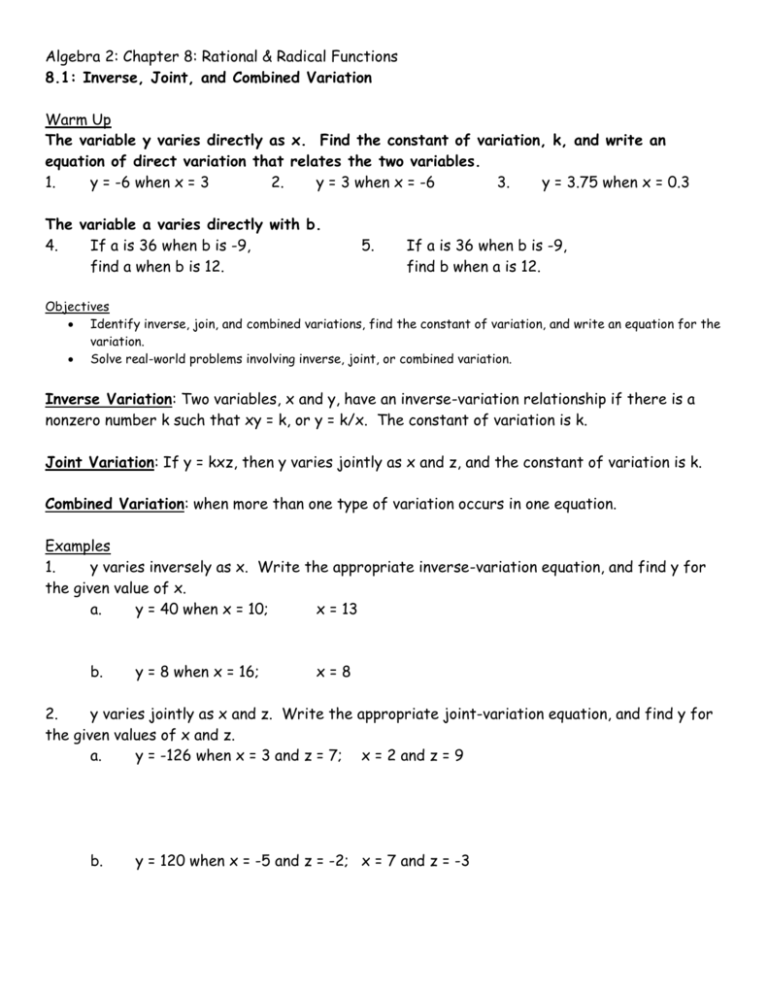
Algebra 2: Chapter 8: Rational & Radical Functions 8.1: Inverse, Joint, and Combined Variation Warm Up The variable y varies directly as x. Find the constant of variation, k, and write an equation of direct variation that relates the two variables. 1. y = -6 when x = 3 2. y = 3 when x = -6 3. y = 3.75 when x = 0.3 The variable a varies directly with b. 4. If a is 36 when b is -9, find a when b is 12. 5. If a is 36 when b is -9, find b when a is 12. Objectives Identify inverse, join, and combined variations, find the constant of variation, and write an equation for the variation. Solve real-world problems involving inverse, joint, or combined variation. Inverse Variation: Two variables, x and y, have an inverse-variation relationship if there is a nonzero number k such that xy = k, or y = k/x. The constant of variation is k. Joint Variation: If y = kxz, then y varies jointly as x and z, and the constant of variation is k. Combined Variation: when more than one type of variation occurs in one equation. Examples 1. y varies inversely as x. Write the appropriate inverse-variation equation, and find y for the given value of x. a. y = 40 when x = 10; x = 13 b. y = 8 when x = 16; x=8 2. y varies jointly as x and z. Write the appropriate joint-variation equation, and find y for the given values of x and z. a. y = -126 when x = 3 and z = 7; x = 2 and z = 9 b. y = 120 when x = -5 and z = -2; x = 7 and z = -3 3. z varies jointly as x and y and inversely as w. Write the appropriate combined-variation equation, and find z for the given values of x, y, and w. 1 a. z = 3 when x = -2, y = 6 and w = 12; x = 5, y = -4 and w = 2 b. z = 6 when x = -6, y = -9 and w = 3; x = -3, y = 6 and w = 5
